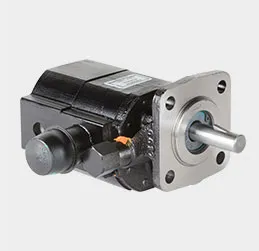engine sand casting
The Significance of Engine Sand Casting in Modern Manufacturing
In the realm of manufacturing, the process of casting has become an essential technique for producing complex metal components. Among various casting methods, sand casting, particularly for engine components, has gained significant traction due to its cost-effectiveness and versatility. This article explores the intricacies of engine sand casting, its benefits, and its prominent role in the automotive industry.
Sand casting is a process that involves creating a mold from a sand mixture to shape molten metal into desired forms. The procedure begins with the preparation of a sand mold. A pattern, usually made from metal, wood, or plastic, is created to form the hollow space of the desired engine component. Once the pattern is placed in the sand mixture, the sand is compacted around it, creating a mold cavity. Afterward, the pattern is removed, leaving behind a precise imprint of the component.
The next step involves pouring molten metal—often aluminum or iron—into the mold cavity. The metal is allowed to cool and solidify, after which the sand mold is broken away to reveal the cast part. This method is particularly favored for manufacturing engine components such as cylinder heads, engine blocks, and critical structural parts. The reason for its popularity lies in its capability to produce large, complex shapes that are often required in engine design.
One of the primary advantages of engine sand casting is its cost-efficiency, especially for low to medium production runs. Creating molds from sand is significantly cheaper compared to other materials, such as steel or ceramic. Additionally, sand casting allows for rapid prototyping. Engineers and designers can quickly create a prototype part in order to test and modify the design, thus speeding up the overall product development process.
engine sand casting

Another benefit of sand casting is its flexibility regarding different metal types. Various alloys can be utilized based on the specific requirements of the engine component, including strength, weight, and thermal conductivity. This flexibility enables manufacturers to optimize components for performance, durability, and efficiency.
Sand casting also supports the use of recycled materials. The sand used in the casting process can be reused multiple times, which not only reduces waste but also lowers production costs. This environmentally friendly aspect is increasingly relevant in today’s manufacturing landscape, where sustainability is a key concern.
Despite its advantages, engine sand casting does have some limitations. The surface finish of sand-cast components is typically less smooth compared to other casting methods, such as investment casting. This can sometimes necessitate additional machining processes to achieve the desired tolerances and surface quality. Moreover, the dimensional accuracy can vary, which may lead to challenges in high-precision applications.
To address these limitations, advancements in technology and casting methods have emerged. Innovations such as computer-aided design (CAD) and computer numerical control (CNC) machining have allowed for better precision in pattern making and post-casting processes. These technologies help bridge the gap between the traditional casting limitations and the modern demands for high-quality engine components.
In conclusion, engine sand casting plays a vital role in the manufacturing of critical automotive components. Its cost-effectiveness, flexibility in material selection, and ability to produce complex shapes make it a valuable process in the industry. While it does present some challenges, ongoing technological advancements continue to enhance its capabilities. As the automotive sector continues to evolve, the importance of sand casting in producing reliable, efficient engine components will undoubtedly endure.
-
OEM Sand Cast Pump Valve Fittings - Baoding Hairun | Precision Engineering, CustomizableNewsJul.30,2025
-
OEM Sand Cast Pump Valve Fittings - Baoding Hairun Machinery And Equipment Trading Co., Ltd.NewsJul.30,2025
-
OEM Sand Cast Pump Valve Fittings - Baoding Hairun Machinery And Equipment Trading Co., Ltd.NewsJul.30,2025
-
OEM Sand Cast Pump Valve Fittings - Baoding Hairun Machinery|Precision Engineering&Fluid ControlNewsJul.30,2025
-
OEM Sand Cast Pump Valve Fittings - Baoding Hairun Machinery And Equipment Trading Co., Ltd.NewsJul.30,2025
-
OEM Sand Cast Pump Valve Fittings-Baoding Hairun Machinery And Equipment Trading Co., Ltd.NewsJul.30,2025















